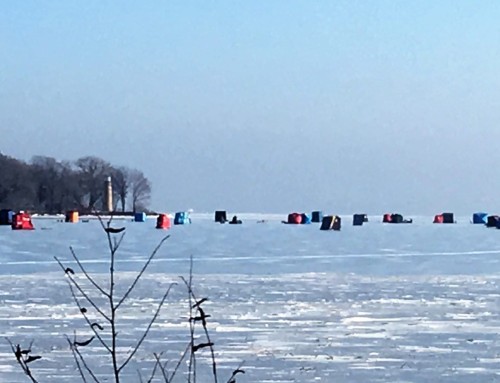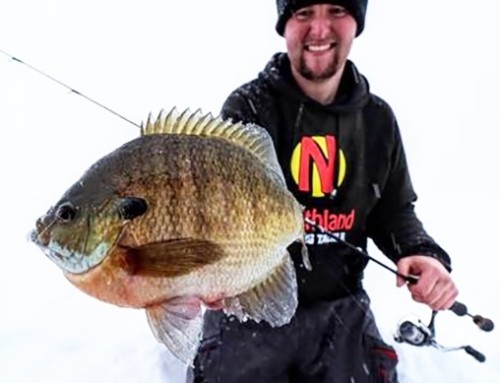When winter sets in and Wisconsin’s lakes are covered with a thick layer of ice, a new season of fishing begins. Crappie, a favorite among ice anglers, becomes more accessible during this time as they school up and settle into predictable winter patterns. Whether you’re a seasoned angler or new to ice fishing, understanding crappie behavior and effective tactics is key to a successful day on the ice.
Finding Crappies on Small Wisconsin Lakes
Small lakes across Wisconsin provide excellent opportunities for crappie fishing in winter. These lakes often have manageable ice thickness and less angling pressure, making them ideal for targeting crappie. Locating crappie begins with understanding their winter habits.
- Early Ice: During the early ice season, crappie often remain in areas they occupied during late fall. Focus on the edges of weed beds, submerged timber, and drop-offs near shallower water. Depths of 8 to 15 feet are common during this time.
- Midwinter: As the season progresses, crappie tend to move deeper into the basins of small lakes. These basins typically range from 15 to 30 feet deep. Use a contour map to locate the deepest parts of the lake, as crappie often suspend in these areas.
- Late Ice: Toward the end of winter, crappie become more active and start moving back toward shallower water. Look for them near inflows or areas where oxygen levels are higher due to melting snow and ice.
Ice Fishing Tactics for Crappie
Once you’ve pinpointed the likely crappie locations, employing the right tactics will help you reel them in. Here are some proven strategies for ice fishing crappie in Wisconsin:
- Drill Multiple Holes: Crappies are notorious for roaming in schools. To locate active fish, drill a series of holes across different depths and structures. A flasher or sonar device can help identify fish and their depth.
- Light Line and Small Jigs: Crappies have soft mouths, so using light tackle is crucial. Opt for 2- to 4-pound test lines and small jigs, such as tungsten ice jigs tipped with waxworms, spikes, or soft plastic tails.
- Vertical Jigging: Crappie often suspend at specific depths, so vertical jigging is an effective technique. Use a slow and steady jigging motion to entice bites. Pay attention to your flasher to adjust the depth of your lure to match the fish.
- Deadsticking: If crappie seems finicky, try dead sticking. This involves suspending a live minnow on a plain hook or small jig just above the school and letting it sit motionless. The natural movement of the minnow can trigger strikes.
- Use Electronics: A flasher or fish finder is invaluable for locating crappie and monitoring their behavior. Look for suspended fish and adjust your presentation accordingly.
- Time Your Outings: Crappies tend to be more active during low-light periods. Early morning and late afternoon are prime times to fish but don’t overlook nighttime crappie fishing, as their feeding activity can extend into the dark hours.
Best Wisconsin Lakes for Winter Crappie
While small lakes across Wisconsin can provide excellent crappie fishing, a few notable options include:
- Big Muskellunge Lake (Vilas County): Known for its abundant crappie population and diverse structure.
- Lake Noquebay (Marinette County): A smaller lake with consistent crappie action during winter.
- Cedar Lake (Polk County): Offers great opportunities for panfish, including crappie.
- Delavan Lake (Walworth County): Popular among ice anglers for its productive crappie fishing.
Conclusion
Wisconsin’s frozen lakes offer crappie enthusiasts a unique and rewarding fishing experience. You can enjoy a productive day on the ice by understanding their seasonal movements, employing effective tactics, and using the right gear. So grab your auger, bundle up, and head out to your favorite small lake — the crappie are waiting!





